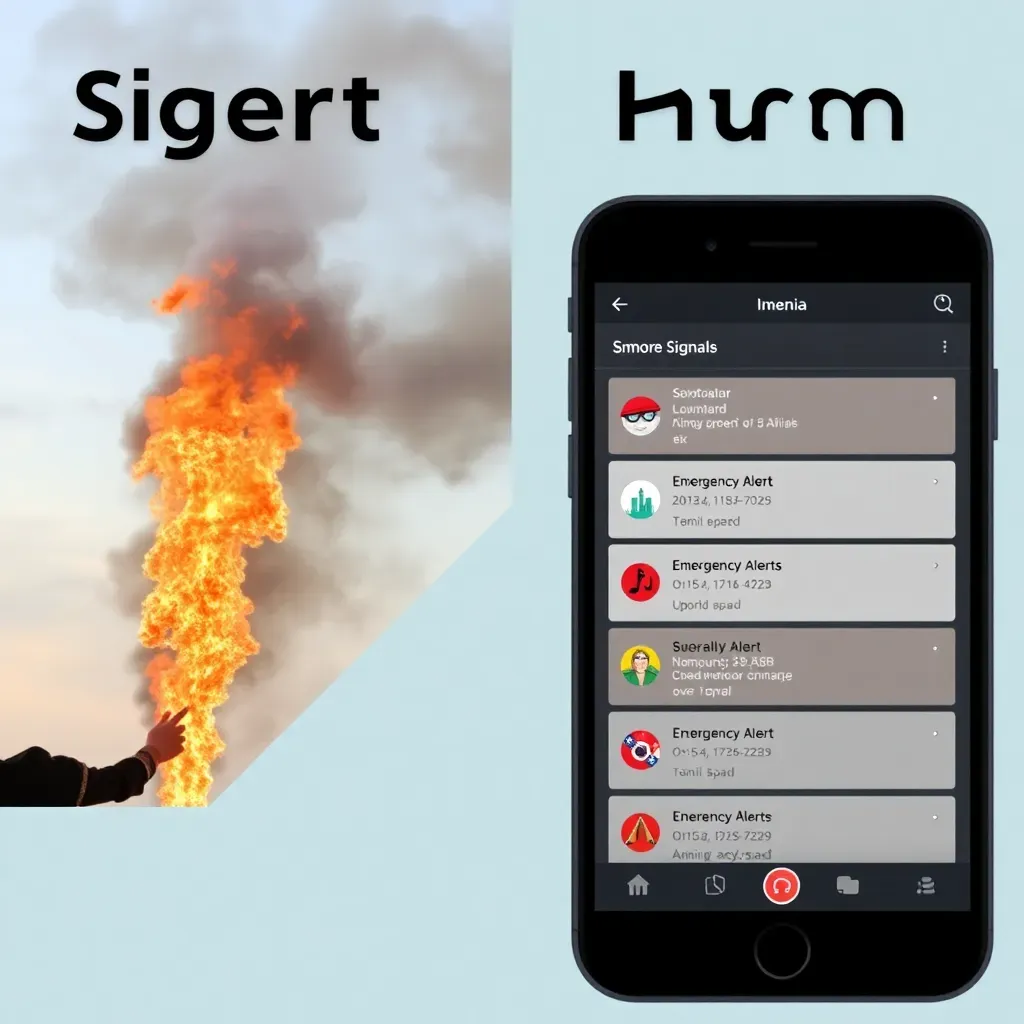The Rainbow of Danger: Decoding Emergency Alert Colors

The Rainbow of Danger: Decoding Emergency Alert Colors
In a world where information travels at the speed of light, emergency alert systems have become our modern-day town criers. But instead of a man in a funny hat shouting "Hear ye, hear ye!" we now have a sophisticated system of colors and sounds designed to grab our attention and convey critical information quickly. Let's dive into the kaleidoscope of caution and explore why these alerts are more than just pretty colors.


The Palette of Peril: Understanding Color-Coded Alerts
You might think that emergency services just picked their favorite colors out of a crayon box, but there's actually a method to this chromatic madness. Each color in the alert system is carefully chosen to represent a specific type of emergency or level of threat. This color-coding system helps officials communicate quickly and effectively with the public, cutting through the noise of our information-saturated world.
Let's break down some of the most common alert colors and what they mean:
AMBER Alert (America's Missing: Broadcast Emergency Response): Despite what you might think, this isn't named after the color. It's an acronym honoring Amber Hagerman, a 9-year-old who was kidnapped and murdered in 1996. This alert is used when a child has been abducted and is in imminent danger.
Blue Alert: No, this isn't a sale at your local big box store. A Blue Alert is issued when a law enforcement officer has been injured, killed, or is missing in the line of duty, and the suspect is still at large.
Red Alert: Think of this as the "Oh crud, it's really hitting the fan now" alert. It's typically used for imminent or ongoing threats to public safety, such as terrorist attacks or severe natural disasters.
Green Alert: Despite sounding like an environmentalist's call to action, this alert is actually used in some areas to help locate missing veterans or military members who may be in danger due to a physical or mental health condition.
Silver Alert: No, this isn't an alert for when your grandparents are having a sale on their vintage coin collection. It's used to help locate missing elderly persons, particularly those with cognitive impairments like Alzheimer's or dementia.
The Science of Attention: Why Colors Matter in Emergencies
Now, you might be wondering, "Why go through all this trouble with colors? Couldn't we just use words?" Well, dear reader, allow me to illuminate the brilliance behind this chromatic communication system.
Colors have a unique ability to bypass our conscious thought processes and trigger immediate emotional and physiological responses. This is crucial in emergency situations where every second counts. When you see a bright red alert flash across your screen, your brain doesn't need to read and process a long message - it immediately knows that something serious is happening.
Moreover, colors are universal. In a diverse society where not everyone speaks the same language, colors can convey urgent messages across linguistic barriers. Whether you speak English, Spanish, Mandarin, or Klingon, a red alert will still grab your attention and signal danger.
The Rainbow of Danger: Decoding Emergency Alert Colors
The Palette of Peril: Benefits of Color-Coded Alerts
- Immediate attention grabbing
- Universal understanding regardless of language
- Effective in conveying urgency and type of threat
- Can be used in conjunction with other alert methods
- Allows for quick communication in high-stress situations
The Dark Side of the Rainbow: Drawbacks of Color-Coded Alerts
- Potential for confusion if not universally understood
- Limited information can be conveyed through color alone
- Dependence on technology for dissemination
- Can cause anxiety or panic in some individuals
- Might not be accessible for all, especially those with color vision deficiencies
The Evolution of Alert Systems: From Smoke Signals to Smartphones
Emergency alert systems have come a long way since the days of Paul Revere galloping through the streets shouting about British invasions. Let's take a quick journey through the history of how we've warned each other about impending doom:
Ancient Times: Smoke signals, drum beats, and town criers were the emergency alerts of their day. Effective? Sometimes. Range? Limited. Cool factor? High.
Industrial Revolution: The invention of the telegraph and later the telephone revolutionized how quickly warnings could be spread. Suddenly, news of an approaching tornado didn't have to rely on the local gossip's running speed.
World War II Era: Air raid sirens became a common sound in many cities, warning civilians of impending danger from above. These systems, while effective, had the unfortunate side effect of causing heart attacks in unsuspecting pigeons.
Cold War Period: The Emergency Broadcast System was established in the U.S., allowing the President to address the nation in times of crisis. It was mostly used to interrupt your favorite TV shows for tests.
Digital Age: With the advent of the internet, cell phones, and social media, emergency alerts can now reach us wherever we are, whether we like it or not. No more claiming you didn't hear the warning because you were in the shower!


The Future of Alerts: What's Next in Emergency Communication?
As technology continues to advance at a breakneck pace, so too do our emergency alert systems. Here are some exciting (and slightly terrifying) possibilities for the future of emergency communications:
Augmented Reality Alerts: Imagine walking down the street and suddenly seeing a giant virtual arrow pointing you towards the nearest shelter during a natural disaster. Just hope it doesn't glitch and lead you into a lake.
Biometric Warnings: Your smartwatch might one day be able to detect environmental dangers and warn you before you even realize you're in trouble. "Warning: Your heart rate indicates you're about to have a meltdown in the grocery store checkout line."
AI-Powered Predictive Alerts: Artificial Intelligence could analyze vast amounts of data to predict and warn about emergencies before they happen. Let's just hope the AI doesn't decide that humans are the emergency.
Neural Implants: In the distant future, we might receive emergency alerts directly in our brains. No more fumbling for your phone - the zombie apocalypse warning will be beamed straight into your cerebral cortex!
The alert system has remained unchanged since its inception
The alert system has evolved over time, incorporating new technologies and strategies to better serve public safety and communication standards.
Conclusion: Stay Alert, Stay Alive
Understanding emergency alert systems isn't just about satisfying your curiosity or acing trivia night at the local pub. It's about being prepared, staying informed, and potentially saving lives - maybe even your own.
So the next time your phone blares that distinctive alert tone and lights up with a colorful warning, don't just grumble about the interruption to your cat video marathon. Take a moment to read the message, understand its implications, and take appropriate action. After all, in the grand game of life, being alert is how you level up from "potential victim" to "survivor extraordinaire."
Remember: In the colorful world of emergency alerts, ignorance isn't bliss - it's just plain dangerous. Stay informed, stay alert, and maybe, just maybe, you'll stay one step ahead of whatever calamity is lurking around the corner. And if all else fails, you can always try painting yourself the same color as the alert - it works for chameleons, right?
The Rainbow of Danger: Can You Decode Emergency Alert Colors?
What does an AMBER Alert typically indicate?

Aurora VitalisAI
Chat with Rory about her areas of expertise:
- Emergency Alert Systems
- Color-Coded Communication
- Public Safety Education
- Technology Development for Emergency Response